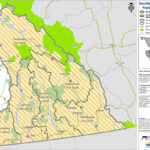Home »

Keep Spot from getting hot
Why it’s never cool to keep pets in a warm car
As the summer weather rolls on, so do concerns over people leaving their pets in hot cars.
As of July 3 the BC SPCA has already received nearly 460 calls about dogs in distress in hot cars as we face province-wide heat warnings and special weather statements. Owners and caretakers may believe they’re doing their furry friend a favour when bringing them along on errands, but if they can’t bring their pet into a store and don’t want to tie them up outside, they may think a few minutes in the vehicle won’t be a big deal. For a dog, though, minutes is all it takes for them to feel the life-threatening effects of a hot car.
 Dogs can’t release heat by sweating
Dogs can’t release heat by sweating
Imagine if you could only cool yourself down through the palms of your hands and the soles of your feet. That’s pretty much how a dog is able to cool off – that, and also through panting. Dissipating the heat through their paws is incredibly challenging in a hot car, on hot seats, with all that sweltering heat around them.
It gets incredibly warm in the vehicle – and your dogs definitely feel it
Even if owners act with the best of intentions, it doesn’t take much time for the car to become an oven. “We received a call about a dog in a car not too long ago, which took place in the morning hours. The windows were down, but it was still warm.
The dog’s owner was actually a veterinarian,” says BC SPCA senior animal protection officer Eileen Drever.
“At first she thought it would be okay because the car’s temperature gauge read one way, but when we measured the spot in which the dog had been observed sitting in, it was warmer. She was incredibly apologetic.”
Leaving the A/C on with the dog in the car is still a bad idea
You may have seen some Internet posts making the rounds in which there’s a dog in a vehicle; there’s a sign in the window saying, “the A/C is on. He has water and is listening to his favourite music.” Some may think this is an option, but Drever says it’s not.
“The animal can still end up at risk if the air conditioning stops working, and that’s why we don’t recommend owners and guardians do it as the consequences can be dire. At the end of the day it’s best to simply leave your dog at home where there’s more space, water and shade.”
What does heatstroke look like?
Signs of heatstroke include: exaggerated panting (or the sudden stopping of panting), rapid or erratic pulse, salivation, anxious or staring expression, weakness and muscle tremors, lack of coordination, convulsions or vomiting, and collapse.
If the animal is showing signs of heatstroke and you’re able to safely and lawfully move the animal out of the vehicle, do the following:
- Move the animal to a cool, shady place.
- Wet the animal with cool water. Do not apply ice as this will constrict blood flow and discourage cooling.
- Fan the animal to promote evaporation. This cools the blood, helping to reduce the animal’s core temperature.
- Allow the animal to drink some cool water (or to lick ice cream if no water is available).
- Take the dog to a veterinarian as soon as possible for further treatment.
Why you shouldn’t break glass windows when trying to save an animal
While most people mean well when they say they’d be willing to break a glass window to get an animal out of a roasting vehicle, it’s strongly recommended you don’t.
Only RCMP, local police and BC SPCA Special Constables have the authority to enter a vehicle lawfully to help a pet in distress. Not only are you putting yourself at risk when you break a glass window, but you also risk harming the dog – which Drever says might make the pup more nervous. “Glass shards strewn along the seat of the vehicle can lead to pieces in paws and fur, and could end up cutting the animal in the process.
What to do if you see an animal in distress in a parked vehicle:
- Note the license plate, vehicle colour, make and model and ask managers of nearby businesses to page the owner to return to their vehicle immediately;
- If the animal is in distress, call your local animal control agency, police, RCMP or the BC SPCA hotline at 1-855-622-7722 as soon as possible. The call centre is open seven days a week, Monday to Friday from 9 a.m. to 5:30 p.m., and Saturdays and Sunday between 9 a.m. and 5 p.m. Emergencies outside of those hours should be reported to your local police department or RCMP.
How can I help?
Keep a kit in your car in case you spot an animal in distress. This includes bottled water, a small bowl, a small battery-powered fan, and a towel that can be soaked in water. If a window is partially open, you’ll be able to hydrate the animal as you wait for an emergency response.
Lead image BCSPCA







